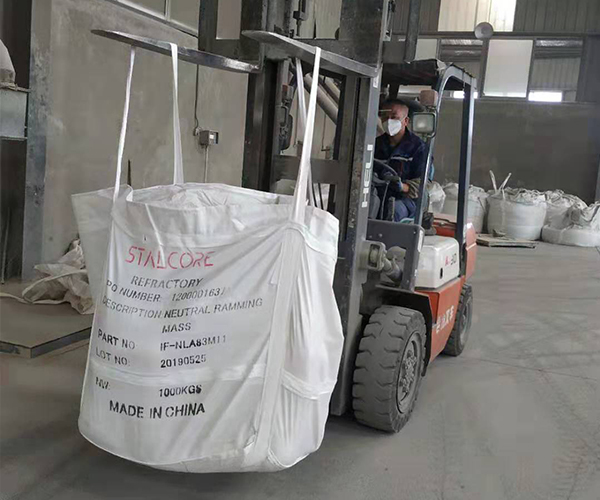Contact: Manager Qu
Phone: +86 15330915520
Contact: Manager Liu
Phone: +86 13464791403
Address: Dashiqiao City, Liaoning Province
Refractory materials for magnesia-chrome brick manufacturers are the basic materials for high-temperature work. In the high-temperature process, due to the raw materials used, some will produce toxic substances at high temperatures, which will cause serious harm to the human body and the environment, including magnesium oxide and two oxides. Aluminum magnesia chrome bricks have high refractoriness, high temperature strength, strong acid and alkali corrosion resistance, and low thermal conductivity. They are often used in the steel industry, glass industry, cement industry, copper smelting industry, etc., but the product contains Trivalent chromium will be converted into hexavalent chromium at high temperature. Hexavalent chromium is toxic and soluble in water, causing harm and pollution to the human body, the environment and water resources. Magnesia brick
In January 2015, the Ministry of Industry and Information Technology issued an announcement on the standard conditions of the cement industry, restricting the use and speeding up the elimination of chromium-containing refractories and preheater inner cylinders, and actively promoting chromium-free cement kilns.
In August 2015, the housing and urban-rural construction in Liaoning Province triggered a notice of green manufacturing in the building materials industry, promoting new refractory materials, comprehensively promoting chromium-free refractory materials, and reducing heavy metal pollution from the source.

On February 1, 2019, the National Development and Reform Commission and the Ministry of Commerce jointly issued relevant regulations on the metal mineral products industry: It is not difficult to see the production of environmentally friendly (chromium-free) refractories for kilns such as cement, glass, ceramics, and microporous carbon bricks. , The trend of chromium-free refractories is getting tighter. In recent years, green refractories and environmentally friendly refractories have been introduced one after another. What are the basic refractories that replace magnesia chrome bricks?
Refractory materials for VOD furnace lining in my country
VOD furnace smelts low-carbon and ultra-low-carbon steel. The slag line is made of MgO-Cr2O3; the damage factors are as follows: (1) The slag preferentially dissolves the MgO in the brick, cannibalize the spinel, and destroys the direct bond of the brick. . (2) The slag enters into the brick along the cracks of the brick, causing the brick to deteriorate and peel off. (3) Due to the reduction reaction, the direct bonding part of the brick is reduced and the brick is deteriorated. (4) The scouring of the organic maple gradually lost the metamorphic layer and caused damage. (5) The main components of the brick volatilize under high temperature vacuum, which leads to weight reduction, increase of pores, further increase of slag penetration, and accelerated corrosion.
In order to meet the needs of my country's external refining technology, the fully synthetic magnesia-chromium and magnesia-aluminum-chromium bricks researched and developed are used in the VOD slag line and lining.
Fused and combined magnesia-aluminum chrome bricks: The coarse particles used for making bricks are made of high-purity magnesite, MgO>46%; mixed with chromite, Cr2O3>45%; fused magnesia-aluminum chrome sand synthesized by the fusion process. Industrial alumina is added, mixed with fused magnesia-aluminum spinel fine powder, and then fired at a high temperature to produce fused and combined magnesia-aluminum-chrome bricks with good resistance to dung changes. The microstructure of the brick uses periclase as the main crystal phase, and magnesia-chromium spinel and magnesia-aluminum spinel as the combined phase, which has high strength and corrosion resistance. The brick is used in the lining of a 130t VOD furnace in Dalian, with a life span of 25 furnaces and an average erosion rate of less than 2.0mm per furnace.
Fully synthetic magnesia-chrome bricks; select high-purity light burnt magnesia and chrome ore in proportion to directly synthesize and calcinate at high temperature, with low porosity and high strength. The synthetic brick is used in the 13t VOD furnace, and the slag line in the high erosion zone is mainly operated with low alkalinity slag. The erosion rate is 0.24~I.4mm/furnace.
The addition of zirconia can improve the performance of magnesia-chromium refractories to a certain extent: (1) ZrO2 itself has strong chemical stability, shows good chemical inertness to general glass melts and acids and alkalis, and is not easy to be Wetting by metal solution, etc.; (2) ZrO2 can change the aggregation state and grain shape of each crystal grain boundary phase in the magnesia-chromium refractory material, and reduce the dihedral angle between the crystals, and promote the bonding between the crystals.
However, the addition of too much ZrO2 is unfavorable for magnesia-chromium refractories. This is because the solid solubility of ZrO2 in magnesium oxide is relatively small. If excessive ZrO2 is added, residual ZrO2 will remain between the grains. , It hinders the mass transfer in sintering and is not conducive to the densification of bricks.